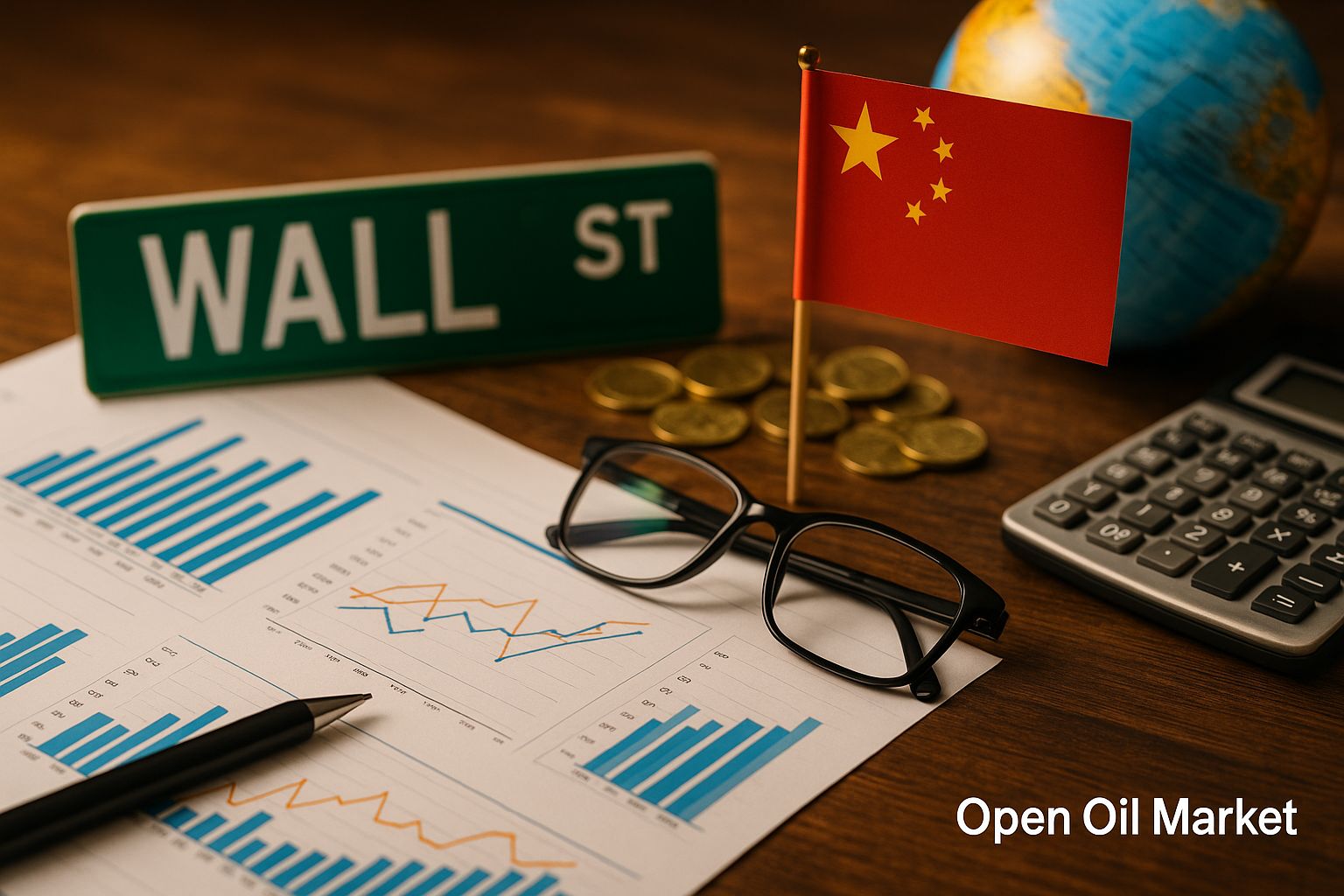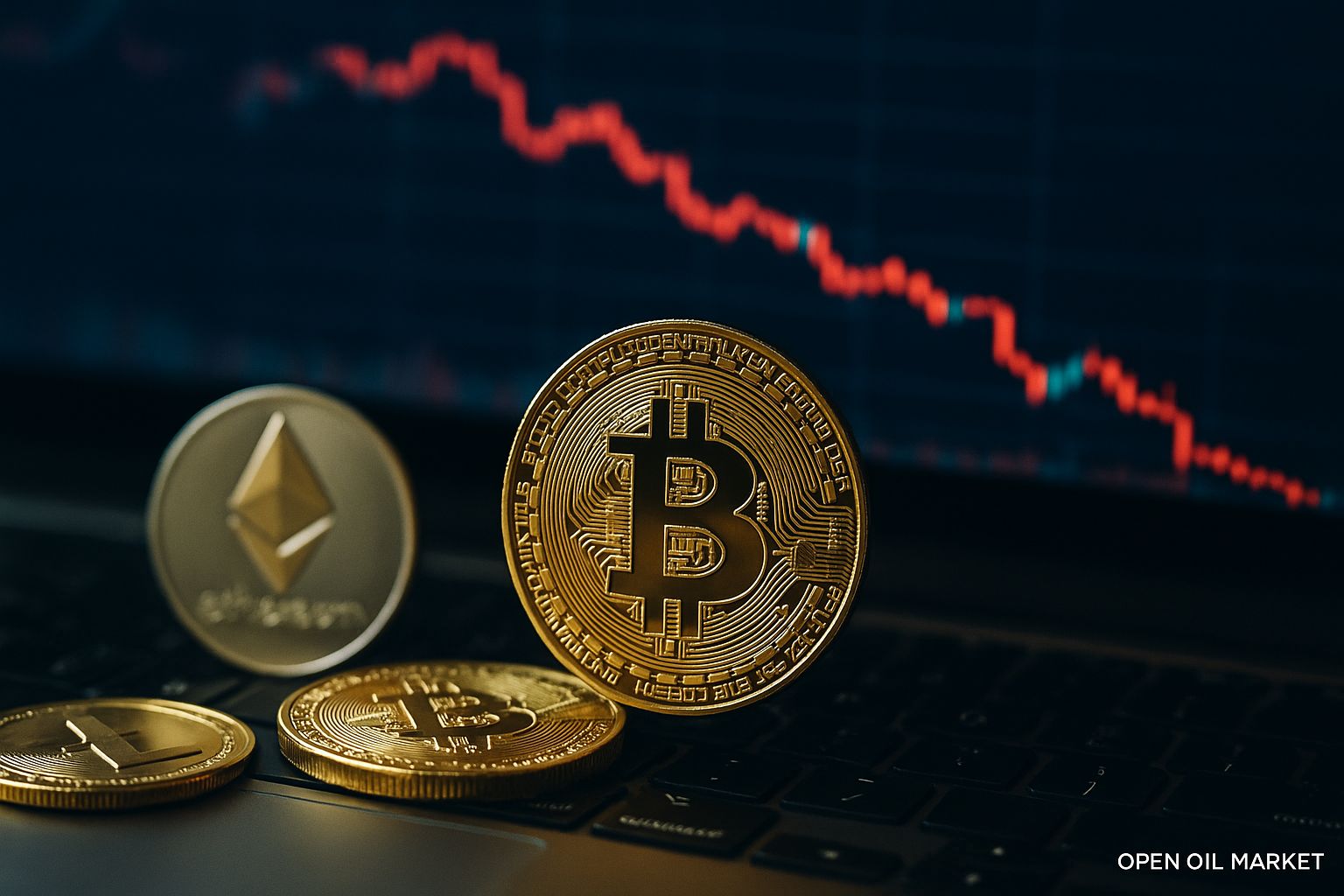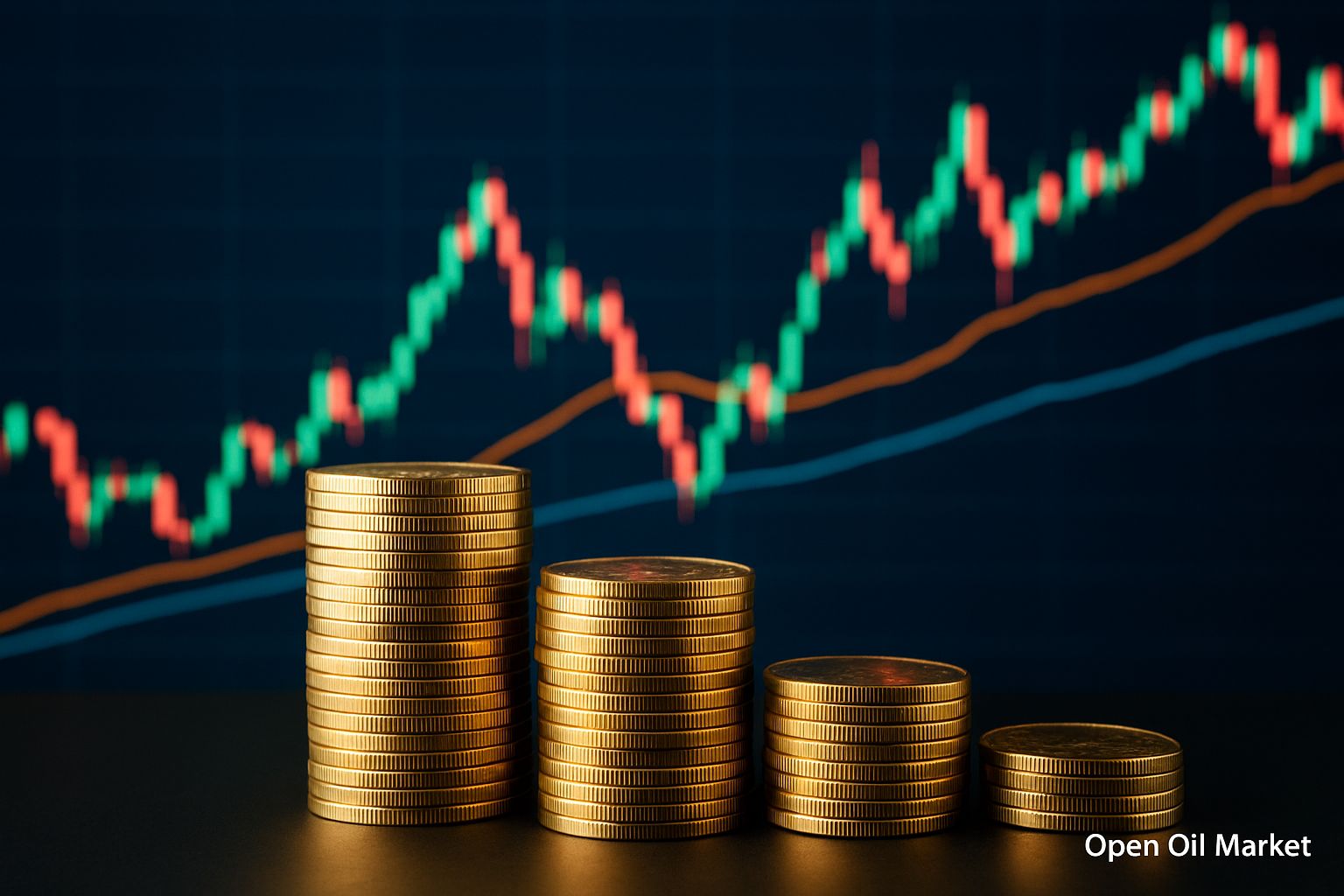
Startup and Venture Investment News — Thursday, July 31, 2025: The Return of IPOs and AI Deal Boom
By the end of July 2025, the global startup ecosystem is demonstrating a robust revival following several years of decline. Venture capitalists are once again actively funding technology companies, with unprecedented capital-raising deals being struck and startup plans for going public returning to the agenda. Major corporations are resuming bold investments, launching new funds, while governments across various nations are ramping up support for innovation, keen to keep pace in the global technological race. Preliminary data indicates that the total venture financing volume in the first half of 2025 reached its highest level since early 2022. In the second quarter, global investments in startups amounted to about $90–91 billion, representing an approximate 10–12% increase compared to the previous year. Although these figures still fall short of the record highs witnessed in 2021, the current positive trajectory indicates a resurgence of private capital in the market and the formation of a new wave of venture uplift.
Venture deals are spanning all regions—from Silicon Valley and Europe to Asia, the Middle East, Africa, and Latin America. Notably, there is a surge in North America, which accounts for nearly 70% of all investments (a significant part of which is directed towards the artificial intelligence sector). In Europe, the landscape is reshaping: Germany has overtaken the UK in venture investment for the first time in a decade, signaling growth in continental startup ecosystems. Meanwhile, dynamics in Asia are uneven: startup funding in China has dropped to multi-year lows, while India, Southeast Asia, and the Middle East continue to attract substantial capital. Even local markets like the CIS countries are striving to catch the new wave of growth despite external constraints. The overall picture points to a revival of the global venture boom, although market participants remain cautious and selective in their project choices.
Below are key events and trends shaping the venture market agenda as of July 31, 2025:
- The continuing revival of IPO activity. Successful public offerings and new filings from tech "unicorns" confirm that the long-awaited "window" for IPOs remains open.
- Unprecedented funding rounds and the emergence of new unicorns. Record investments are driving startup valuations to multi-billion dollar levels, primarily in the artificial intelligence sector.
- The return of major investors and the formation of mega funds. Leading players are forming new venture funds and increasing their investments, refilling the market with capital and bolstering risk appetite.
- Diversification of sector investments. Venture capital is being directed not only into AI but also into fintech, climate technology, biotech/medtech, defense projects, and even crypto startups, broadening market horizons.
- Market consolidation and a wave of M&A deals. Major mergers, acquisitions, and strategic alliances are reshaping the industry landscape, opening new opportunities for exits and company scaling.
- Global expansion of venture capital. The investment boom is spreading to new regions—from the Gulf States and South Asia to Africa and Latin America—forming their own technological ecosystems.
- Local focus (Russia and the CIS). Despite restrictions, new funds and initiatives are emerging in the region to develop startup ecosystems, attracting investor attention to local projects.
The IPO Wave Continues: The Window for Exits Remains Open
The initial public offering market has confidently revived after an extended period of silence and continues to gain momentum. In Asia, Hong Kong has initiated a new IPO wave: several major technology companies have successfully gone public in recent weeks, collectively raising billions of dollars. For instance, a leading battery manufacturer raised approximately $5 billion during its listing, while several fintech and biotech firms carried out IPOs totaling around $1–2 billion each. The situation is also improving in the U.S. and Europe: the recent debut of fintech unicorn Chime on the New York Stock Exchange resulted in stock prices increasing by more than 30% on the first trading day, cementing the company’s valuation at around $15 billion. This success is inspiring other players—design platform Figma has begun its IPO roadshow, aiming to raise nearly $1 billion at an estimated valuation of about $16 billion. Several well-known startups (including payment service Stripe and social platform Reddit) are eyeing the public market in the second half of 2025, considering the favorable market conditions.
Even companies from the crypto industry are targeting public offerings. The cryptocurrency custody service BitGo has announced the submission of a confidential listing application, reflecting a resurgence of investor interest even in previously depressed segments of the digital assets sector. Furthermore, notable listings are planned in developing markets: in India, the Middle East, and Latin America, several rapidly growing companies have announced intentions to go public in the coming months. The wave of successful IPOs worldwide confirms that the "window" for public offerings is indeed reopening—investors are ready to welcome new tech issuers, thereby invigorating the venture market.
Mega Rounds and New Unicorns: Investments Set New Records
The artificial intelligence sector continues to serve as the main magnet for venture capital in 2025, setting new records for funding volume. Unprecedented mega rounds took place in the first half of the year: an investment consortium led by SoftBank invested around $40 billion in AI developer OpenAI—marking the largest private capital influx in the history of the tech industry. The startup xAI, founded by Elon Musk, raised approximately $10 billion (including venture and debt capital), achieving a valuation exceeding $100 billion and ascending into the ranks of the world's most valuable private companies. The Meta Corporation invested $14 billion in the AI data platform Scale AI, aiming to accelerate its own artificial intelligence developments.
Just days ago, a new venture founded by former OpenAI executives secured a record seed round of $2 billion at a valuation of around $12 billion—an unprecedented feat for a startup at such an early stage. Additionally, new massive deals are being announced almost weekly, elevating the valuations of promising companies to previously unseen heights. For example, defense technology startup Anduril Industries raised $2.5 billion in a Series G round, doubling its valuation to approximately $30 billion. The company Safe Superintelligence (founded by OpenAI co-founder Ilya Sutskever) received around $2 billion in funding, confirming the hype surrounding "safe" AI projects.
In total, the first six months of 2025 saw numerous new unicorns emerge—dozens of private companies valued at over $1 billion. Some of them have rapidly reached "decacorn" status (valued at over $10 billion). Industry analysts estimate that since the beginning of the year, more than 40 startups worldwide have surpassed the billion-dollar threshold. Approximately half of all venture financing in the second quarter was directed towards projects in the field of artificial intelligence. However, hype-driven investment is also seen outside of AI: the return of "big money" to the market as a whole is leading to rising valuations in other segments. Notably, even outside of AI, startups are receiving record-level support—for instance, the U.S.-based expense management platform Ramp raised $500 million at the end of July, bringing its valuation to $22.5 billion and doubling its worth in less than a month. The influx of capital and record rounds indicate that investors are eager not to miss the next technological revolution, once again believing in the potential of promising projects.
The Return of Mega Funds: Major Investors Refill the Market with Capital
The largest investment players are triumphantly returning to the venture scene, signaling an increased appetite for risk. The Japanese conglomerate SoftBank is betting on large-scale investments again: Masayoshi Son has officially announced the formation of the Vision Fund III, with a capacity of about $40–50 billion, focused on cutting-edge technologies (primarily in AI and robotics). Sovereign funds from Gulf states are also becoming active—injecting billions into tech projects and launching state megaprograms to develop the startup sector, thereby creating their tech hubs in the Middle East.
At the same time, new venture funds—both independent and corporate—are being established worldwide, drawing significant institutional capital for investments in high-tech industries. Renowned Silicon Valley firms are also increasing their presence: for instance, venture giant Andreessen Horowitz (a16z) is raising a record fund of around $20 billion for investments in late-stage American AI startups. According to industry research, U.S. funds currently hold record reserves of uninvested capital (over $300 billion in so-called "dry powder"), prepared to engage as confidence in the market returns. Such flows of "big money" are filling the ecosystem with liquidity, providing fuel for new rounds and supporting the growth of promising companies' valuations. The return of mega funds and large institutional investors not only intensifies competition for the best deals but also instills confidence in the sector regarding the continued influx of capital.
Diversification of Investments: Fintech, Climate, Biotech, and Even Crypto on the Rise
In 2025, venture investments are being distributed across an increasingly broad range of industries, moving beyond merely artificial intelligence. Following last year's downturn, there is a noticeable revival in adjacent sectors—investors are once again showing interest in finance, eco-technologies, biomedicine, defense developments, and other fields. Below are key areas experiencing growth in venture activity and large deals:
- Fintech: Large funding rounds are returning in the financial technology sector globally. For example, the U.S.-based corporate expense platform Ramp raised $500 million (Series E-2 round) at a valuation of $22.5 billion, indicating a new wave of interest in fintech unicorns. Additionally, the New York-based alternative investment platform iCapital secured around $820 million from a consortium of investors at a valuation of approximately $7.5 billion, signaling a resurgence of interest in financial services for affluent clients.
- Climate and Energy: Venture funds are actively financing "green" technologies—from renewable energy and electric mobility to innovative nuclear energy. For example, the Swiss startup Climeworks raised over $160 million for the development of direct CO₂ capture technology from the atmosphere (the total amount raised by this company has exceeded $1 billion). In the field of nuclear fusion, European projects have set new funding records (around €290 million in the first half of 2025), while the American startup Commonwealth Fusion Systems secured about $1 billion for further developments.
- Biotech and Medtech: Significant rounds are taking place in the field of biotechnology and medical startups. Platforms seeking drugs using AI, genetic technologies, and other medtech projects are again attracting substantial capital. For instance, the biomedical company Altos Labs continues to raise hundreds of millions of dollars for research related to life extension, while the Greek project Centivax secured over €130 million for the development of a next-generation universal vaccine.
- Defense Technologies: Investments in startups related to defense and security are growing amid geopolitical tensions. Projects in drone technology, cybersecurity, space systems, and related fields are receiving support from both state funds and private investors eager to strengthen technological sovereignty. For example, the American company Anduril Industries, specializing in high-tech defense solutions, is attracting substantial funding to scale production and develop new products.
- The Crypto Industry: After the corrections of 2022–2023, the crypto market is showing new signs of life. Venture deals in the blockchain sector are reemerging, although funds are proceeding selectively—primarily financing infrastructure solutions and financial applications based on cryptocurrencies. The introduction of clearer regulations (for example, a stablecoin regulation law was passed in the U.S. this spring) has bolstered market participants' confidence. On this backdrop, even major crypto companies are preparing for public offerings—which seemed unlikely just a year ago.
Consolidation and M&A: Market Players Are Expanding
High company valuations and stiff competition for new markets are driving the startup ecosystem towards consolidation. Major mergers and acquisitions are coming back to the forefront, providing investors with the long-awaited exit opportunities and companies with access to new technologies and scale. In 2025, record-breaking exits are being recorded: for instance, the corporation Google has agreed to acquire the Israeli cloud cybersecurity startup Wiz for approximately $32 billion—an unprecedented amount for a venture portfolio project. Moreover, a number of well-known startups globally are finding strategic buyers, and deals with nine- and ten-digit price tags are no longer uncommon.
The consolidation touches on a variety of sectors—from fintech (for example, large banks acquiring regional neobanks) to corporate software and artificial intelligence. Among recent examples is the acquisition of the email service Superhuman by Grammarly as part of a strategy to create an AI platform for productivity, as well as increased activity from IT giants buying promising developments in cloud technology and AI. The overall trend shows that both traditional tech corporations and the "unicorns" themselves are increasingly becoming buyers of startups, aiming to strengthen their market positions. The wave of M&A deals is reshaping the industry landscape, giving startups new routes for exit and allowing venture funds to cash in. This trend indicates market maturity: successful projects either go public or integrate into larger companies, freeing up space for new players and stimulating further cycles of innovation.
Global Expansion of Venture Capital: New Markets on the Horizon
The venture boom of 2025 has truly taken on a global scale, encompassing markets that were previously on the periphery of the tech scene. Gulf States (UAE, Saudi Arabia, Qatar) are actively investing in startups and building infrastructure for technological development—ranging from local accelerators and hubs to giant investment funds focused on technological investments. In Southeast and South Asia, there is a surge in entrepreneurial activity: India, Indonesia, Vietnam, and other countries in the region report increases in late-stage rounds and IPOs, reflecting the dynamics of their rapidly growing digital economies. Just in the last few weeks, several Indian startups have closed funding rounds amounting to tens and hundreds of millions of dollars, while a number of unicorns in the region have announced intentions to become public companies.
Africa is also experiencing an unprecedented influx of venture investment, accelerating the development of local startup ecosystems. From Nigerian fintech projects to Kenyan agritech startups, more and more teams on the continent are attracting international capital. Similarly, Latin America is not falling behind: in countries like Brazil, Mexico, and Chile, the number of venture deals is increasing, and new unicorns are emerging as global investors seek promising assets in this region. The geographical expansion of venture capital intensifies competition for the best projects. Major investment funds are now closely watching startups not only in Silicon Valley or Shanghai but also in Singapore, Dubai, Nairobi, and São Paulo, striving not to miss the next "diamond" on the global tech scene. Consequently, founders from various countries now have unprecedented opportunities to secure financing, making the venture market increasingly international.
Russia and the CIS: Local Focus Amid Global Trends
In Russia and neighboring countries, active measures are being taken to develop homegrown startup ecosystems in line with global trends. At the St. Petersburg International Economic Forum (SPIEF-2025), a new venture fund was announced in partnership with the state bank PSB, valued at around 12 billion rubles for investment in dual-use projects—from drones and artificial intelligence to robotics. PSB is the anchor investor in this fund, also attracting resources from private players; even under sanctions, the market is seeking opportunities to finance priority technologies and nurture its own "unicorns."
At the same time, some regional startups are reaching new heights. For instance, the Krasnodar-based food tech project Qummy raised 440 million rubles at a valuation of ~2.4 billion rubles, preparing for an IPO—this case demonstrates the seriousness of technological business ambitions in the Russian regions. In Kazakhstan, a state fund called Qazaqstan Venture Group has been established, worth $1 billion, to support AI startups and a new wave of tech projects. Furthermore, in July 2025, the President of the Russian Federation signed a decree easing restrictions for foreign investors: they are once again allowed to acquire shares in Russian companies and freely withdraw capital from the country. This step is aimed at reviving international investments in the economy and the venture sector, despite the geopolitical environment.
It is noteworthy that emigrants from CIS countries are already achieving global success, integrating into the international tech industry. For instance, the AI startup Perplexity, founded by a Belarusian entrepreneur and based in the USA, recently secured an additional funding round (~$100 million), increasing its valuation to around ~$18 billion. Another illustrative example is the Dubai-based project Xpanceo, founded by a Russian and a Ukrainian: it raised around $250 million in a Series A round at a valuation of $1.3 billion for the development of "smart" augmented reality contact lenses. These cases confirm that innovative projects rooted in the CIS are capable of competing on the forefront of the global tech arena.
While the scale of the venture market in the region may still be modest compared to the West, the foundation for future growth is currently being laid. Investors are shifting their focus to more mature projects with proven business models, while the government is expanding support—from developing IT education and tech parks to establishing a network of regional accelerators. Local startups are striving to enter global value chains, leveraging strong competencies in high-tech niches (AI, big data, cybersecurity, etc.). Despite all challenges, Russia and its neighboring countries are gradually building their own venture landscape, hoping to eventually secure a worthy place in the global tech race.
Conclusions: Cautious Optimism
As we approach the second half of 2025, the mood among venture investors remains cautiously optimistic. Record deals and successful IPOs instill confidence that the bottom of the recent downturn has been surpassed; however, the lessons of past years keep the market anchored against undue euphoria. Investors are now much more discerning regarding the quality of startups' growth and their ability to build sustainable businesses, preferring companies with proven business models and approaching profitability metrics.
A significant influx of capital into the fields of AI, fintech, and cybersecurity reinforces faith in the further development of the sector. At the same time, funds are paying increased attention to risk diversification and a measured approach to assessing companies. Given a favorable macroeconomic environment, the market could accelerate growth in the second half of the year. For this, it is crucial to merge local potential (talents and projects from different countries) with access to global markets.
Overall, the news about startups and venture investments at the end of July 2025 reflects a heightened interest in innovation combined with a pragmatic approach to financing them. Venture funds and entrepreneurs demonstrate a readiness for collaboration: the former provide capital to promising projects while the latter showcase real progress in technological development. The current situation allows for cautious optimism about the future, anticipating the emergence of new technological breakthroughs and the continued rise of the venture market.





